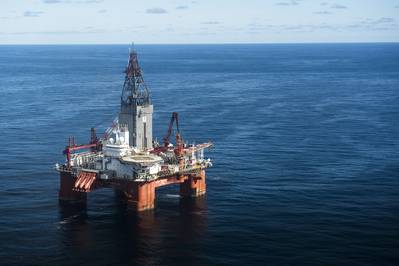Norway's Statoil on Monday played down concerns that drilling in the Arctic is risky, days before it kickstarts its drilling campaign in the Barents Sea, where the country believes around half of its remaining resources could be located.
Despite opposition from environmentalists, the company plans to drill five wells in the Norwegian sector of the Barents Sea, including Korpfjell, which will be the world's northernmost well and in a formerly disputed border area with Russia
"We will start drilling the first well, Blaamann, during May ... followed by Kayak, Gemini (Nord), Korpfjell and Koigen (Central)," said a Statoil spokesman, adding each might take about a month to drill.
All the wells are in areas free of sea ice thanks to the warm Gulf Stream, with sea and wind conditions similar to the North Sea, and some 400 km (250 miles) away from the "ice edge zone" - where at least 10 percent of the sea is covered by ice.
"All wells will be drilled so far south of the existing ice that in the event of any spillage, no oil would never reach the marginal ice zone," Statoil said.
Even in winter, there have only been 10 days of ice in the last 14 years in the areas where drilling is planned, it said.
Greenpeace, which is taking the Norwegian government to court over Arctic drilling plans, said any permanent oil platforms in the region would be particularly risky.
"Both the Korpfjell and Koigen Central licenses are within the reach of the historic marginal sea ice edge for the last 30 years," Truls Gulowsen, head of Greenpeace in Norway, said.
"Statoil should not drill in the Barents Sea because of the pending legal case, because of environmental risk and because the world doesn't need more oil," he said.
Statoil said the statistical probability of a blow-out, an uncontrolled oil spill from a well, was 0.014 percent - or one for every 7,100 exploration wells.
The state-controlled company said drilling the Koigen Central well, some 109 kilometers from Bjoernoeya (Bear Island), one of the largest seabird colonies in the Arctic, posed the biggest environmental risk.
Its own estimates showed an oil spill at Koigen Central could reach Bjoernoeya within 10 days. The company said it would have vessels on standby round the clock in case of any emergency.
Statoil also said Norway and Russia had a joint contingency plan in case an oil spill from the Korpfjell well drifted to Russian waters some 37 kilometers away.
Songa Enabler, a rig owned by Songa Offshore, was on its way to drill the first well, Blaamann, 26 kilometers from Eni's Goliat field, the world's northernmost field in production, shipping data showed.
Gulowsen said Greenpeace planned to send its vessel to observe Statoil's Arctic drilling.
In 2014, Greenpeace activists tried to stop Arctic exploration by boarding the Transocean Spitsbergen rig headed to drill for Statoil near Bjoernoeya.
Greenpeace declined to comment on whether it planned any similar protests this year.
(Reporting by Nerijus Adomaitis)














